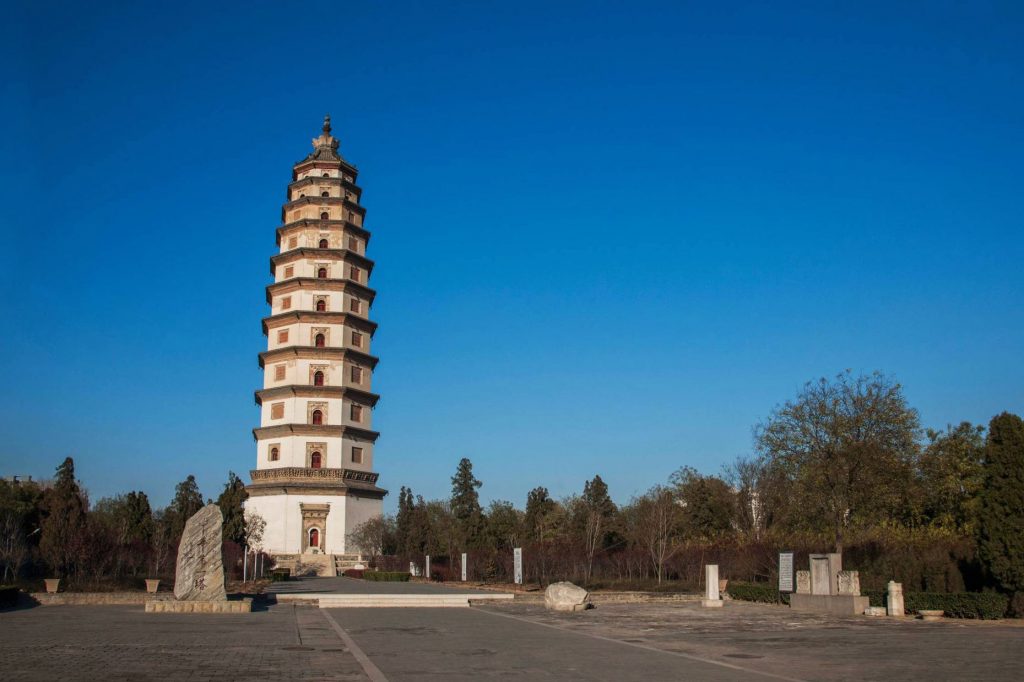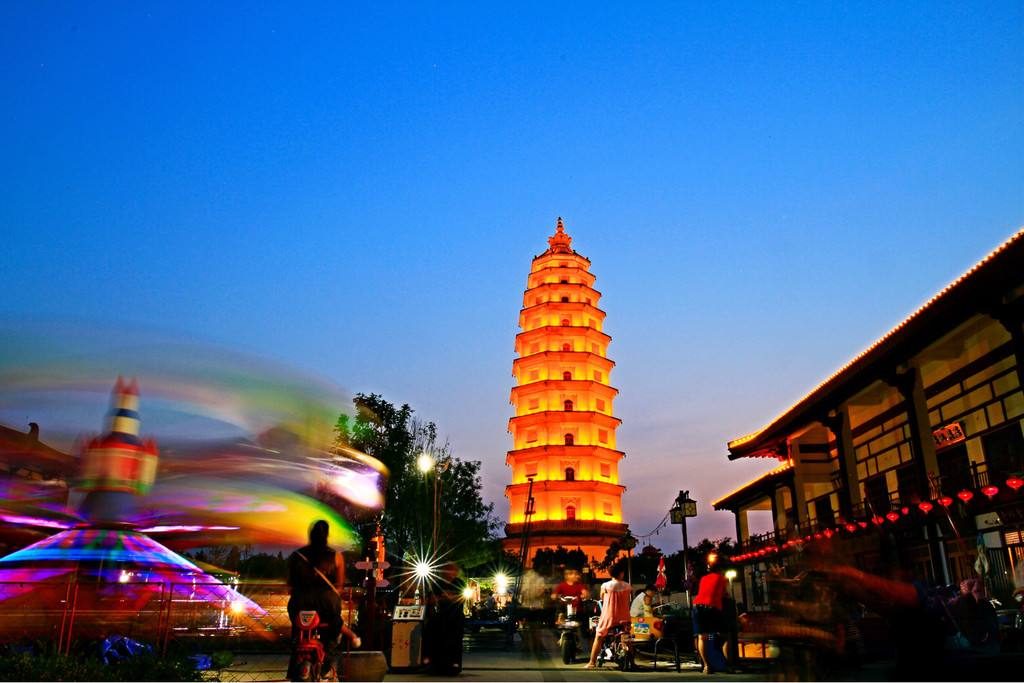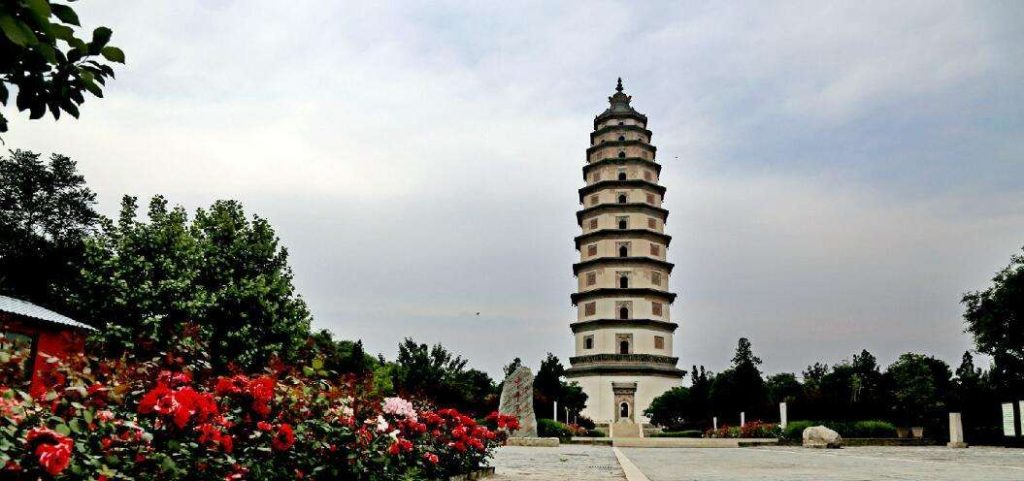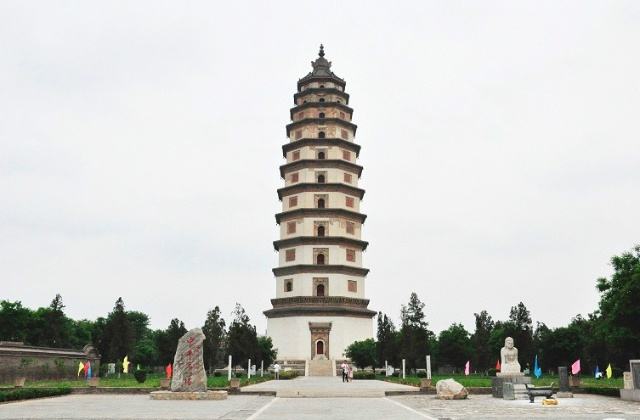Dingzhou Pagoda
6 min readDingzhou Pagoda, also known as Kaiyuan Temple Pagoda or Lookout Tower, is the earliest brick pagoda extant today and enjoys a reputation as the “first pagoda in China”.

Dingzhou Pagoda was originally built in Kaiyuan Temple, so it got its name asKaiyuan Temple Pagoda. According to Dingxian Zhi (a book of collected stories happened in Dingxian County), this pagoda was built in the Song dynasty. During the period of Emperor Zhenzong,a monk named Huineng frequently went west to ancient India for sutras by imperial edict of the emperor and once brought back Buddha relics instead. In 1001, the emperor issued an edict, asking Huineng to build a pagoda. Buddha relics were kept as holy itemss in a small box known as gold coffi with silver casket and buried under the pagoda. The construction of the pagoda lasted 55 years, from the fourth reigning year of Xianping (1001) to the second reigning year of Renheunder Emperor Renzong in the Song dynasty (1055) Why does this pagoda name as Lookout Tower? From the word “lookout”we can easily infer that it is built for military concerns. Although the Song dynasty existed for over 300 years in history, it never fulfilled the great achievement of unifying China. In the north and northeast of its territory, the Liao Empire of Khitan Nationality and the Jin Empire of Nuchen Nationality intruded into the Songterritory from time to time and one after another. In the northwest, Empire Xixia of Dangxiang Nationality glared at Song’s land with ambitious eyes. Besides, small kingdoms in the frontier regions also posed threats to its safety. All these neighboring kingdoms had the ambition of conquering the Song Empire. Facing thecomplex situation, the rulers of the Song dynasty were often unable to sleep ormaintain appetite, worring that any negligence might put them on tenterhooks, or cause them to be dethroned and become prisoners overnight.. In order to safeguard the steadiness of the domination, they paid much attention to the practice of troops training, especially those stationed at the border.

According to the historical records, Hebei was of the greatest importance of al the 18 circuits (a Chinese traditional unit referring to an administrative region, one circuit equals to one province today), while Dingzhou was the most important oneamong all the 36 prefectures in Hebei. Dingzhou was considered as the most important strategic place at that time. Naturally, it received a great deal of attention from the rulers for its strategic position. Besides, since Dingzhou was contiguous to Khitan, conflicts between the two neighbors always arose and people here were notable to live a peaceful life. In order to defend against the Liao Empire, Dingzhou Pagoda-a tall pagoda made of stone and brick-was built for detecting enemy’s situation. It played an important role as an observing tower during the time when the two empires were in extreme tension. Because it stood tall and erect, it was convenient to see the moves of Khitan on the pagoda. Therefore, it is called Lookout Tower or Observing Pagoda.
The Dingzhou Pagoda is very intricate. It raises a height of 84.2 meters and the circumference of its base reaches 128 meters. The plane of this pagoda is octagon with two squares interlacing together. What is more, this tower-style pagoda is tal.
in height and has many layers of eaves. Therefore, it gives people an impression of spacious and grand. The lower half of the pagoda takes up a large proportion of the total and the flat seat on the eaves is in the shape of a pedestal. The upper half of it bends inwards tightly and the height of each story decreases sharply. This unique and ingenious molding not only makes the proportion of each part well balanced and the outline of the body part smooth and free, but also leaves people an impression of elegancy and stability. There are all together eleven stories.
On each story, doors are opened on the due south, north, east and west sides, while windows are opened on the other four sides. But only those on the southwest side of the second, tenth and eleventh stories are real ones to let in light.0thers are all lattice works in shape of relief geometric figures. There are corbelling eaves on each story, forming a concave curve and leaving people an impression as if they were about to fly away to the sky. On the outer part of the body doors andwindows are open. They are intricately carved, exquisite and delicate, making the whole pagoda plump and beautiful, bright and colorful, like a fair lady, full of charm. Hoops are linked to the outside part of each eaves. According to the textual research, wind-bells were originally fixed on the hooks. These wind-wells swung with the breeze and gave a silvery and pleasant sound spreading far, far away. This pleasant sound added to the elegance of the pagoda and made it more charming.
On the top story of the body part, the eaves are in the shape of eight-ridge and eight-slope. The front part of the eaves is carved into vivid characters and animals of varied gestures with yellowish colored glaze. At the junction of the eaves are lotus petals made of bricks with intricate patterns carved on them. There are a dewbearing plate made of iron and a bead made of bronze on the petal. Merged naturallywith the pagoda, these intricate decorations and components are decent, coherent and harmonious. Besides, there is a plaque hanging on the southeast part of the top floor, saying “Nantianmen Gate”(meaning “the southern gate reaching the sky”), the strokes are vigorous and full of power. There is a stair inside the pagoda. Visitorscan climb up to the top story and appreciate the delicate decorations. What’s more, vivid paintings and fine patterns are carved on the inside walls. They are bright and colorful, forming another faceted view. The outer part of the pagoda is painted white except the cornices, the flat seat, doors and windows. Colors shift sharply from outside to inside, giving the pagoda a temperament of another world.

Besides, there is a verandah linking the center with the five surrounding pagoda wa11. It is in the shape of an octagonal cloister and connected with the four doors at each side so as to provide visitors a broad vision.A panoramic view of crisscrossed paths in the plains in Hebei province, wandering and rolling hills of Taihang Mountain, cities and villages, rivers and streets is available at the sametime when visitors stand on the verandah. It has become a tradition and a popular activity that people climb up the pagoda and look around at the beautiful scenery on holidays ever since it was built. They feel proud of being able to put their feet onthe top of the pagoda and view the scenery with their own eyes. On the both sides of the cloister set 25 niches, in which frescos or clay figures are put. Especially in the main niche at the foot of the pagoda’s base and on the brick walls of cloisteron each floor, stone memorials with tablet inscriptions and poems by famous persons were inlayed(there used to be 45 pieces, but only 34 left till today). These historical materials are very important to the study of histories in the Song dynasty and Chinese ancient architecture. The top of the cloister is decorated withcolorful paintings and brick patterns of varied types. These intricate patterns and paintings are distinctive in style, lending more colors to the pagoda.

Dingzhou Pagoda has a history of nearly one thousand years ever since it was built. During the long time of changes, it is evitable scarred with prints and marks of time because of the eroding by natural calamities. This pagoda experienced a dozen of earthquakes, for instance, during the earthquake in June of the 59th reigning year of Emperor Kangxi (1720), it split a two-inch-wide crack from top to bottom and the precious vase was also dropped. In June of the 10th reigning year of Emperor Guangxu(1884), the northeast part of this pagoda collapsed from above to below also because of earthquake. The completeness of this pagoda was destroyed. In spite of it, it still stands out high and erect in a majestic manner until today.
Recently, national cultural relic department has invested a huge amount of money to repair it. This magnificent pagoda of a long history will make its re-appearance with a brand new face soon.